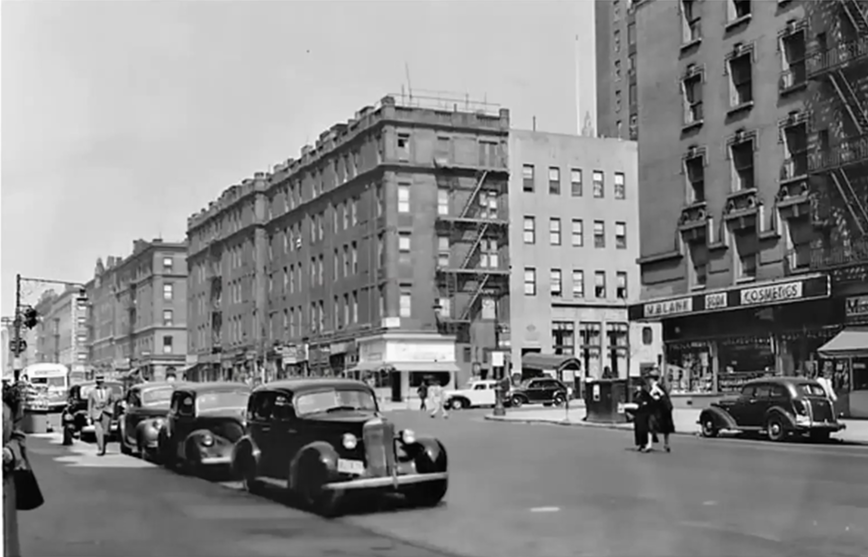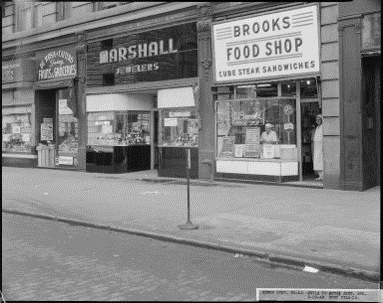Early 20th Century - A Recognizable City - Early 20th Century – A Recognizable City
The elevated train line continues expanding and being used through 1940, which encourages storefront businesses to open and thrive, as they are visible and easily accessible to travelers on the street. The first floor of most flat-topped apartment buildings (like the ones visible on Columbus) became stores. As public transportation grew, so did the streets around it; by the 1930s and 40s, the Upper West Side looked recognizably like a part of New York City. Immigrant communities continue to grow in the neighborhood as well. Many families moved out of the increasingly crowded tenements on the Lower East Side in the 20’s and 30’s. In the late 30’s, another influx of Jewish immigrants/refugees arrive from Germany after fleeing the growing threat of the Nazi regime.
- Photograph circa 1940 of the intersection of Columbus Avenue and W. 86th Street.
- Storefronts along Amsterdam Avenue between 72nd and 73rd Streets, from a 1949 photograph.


